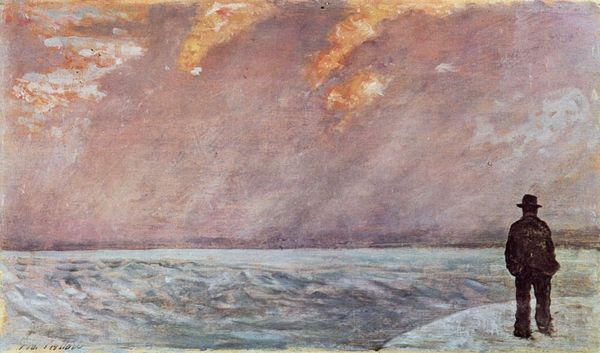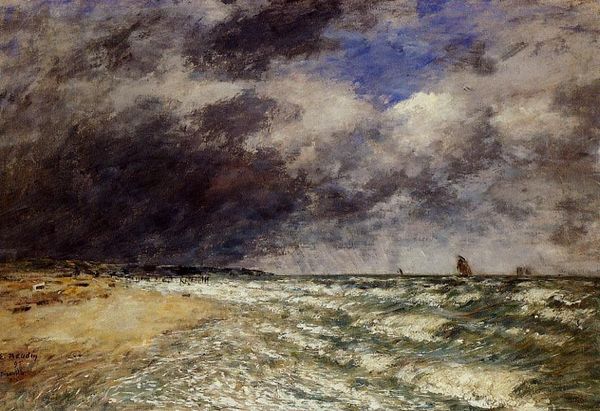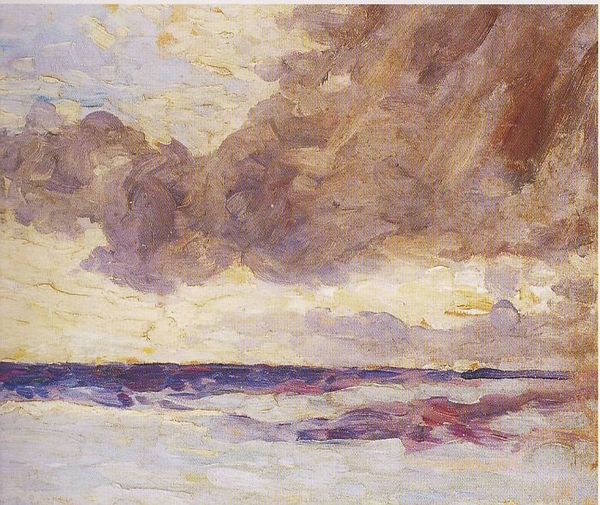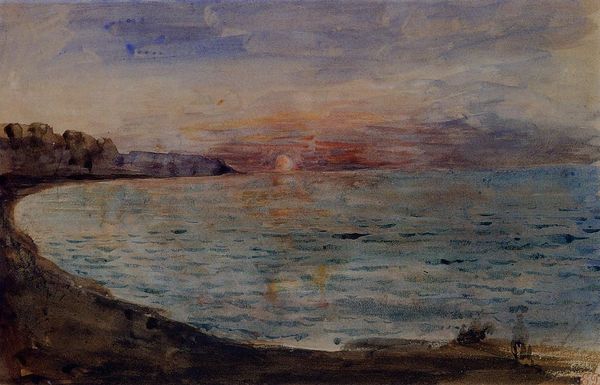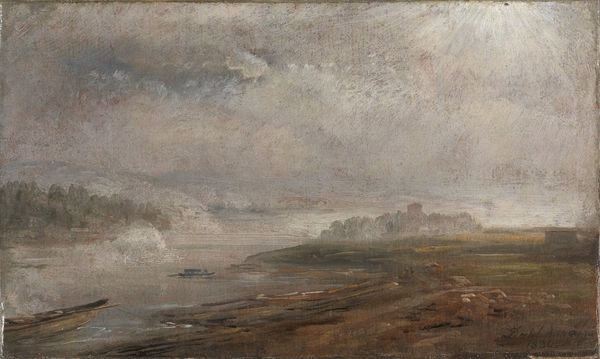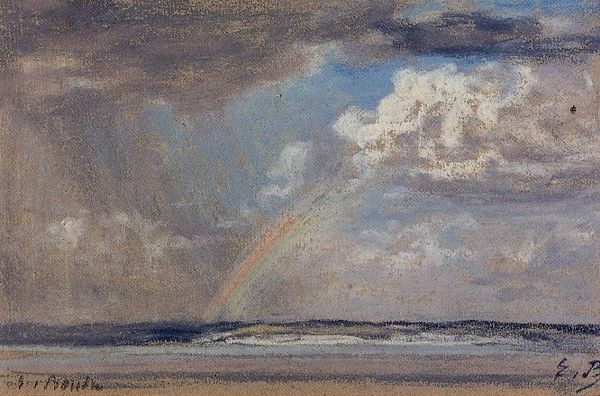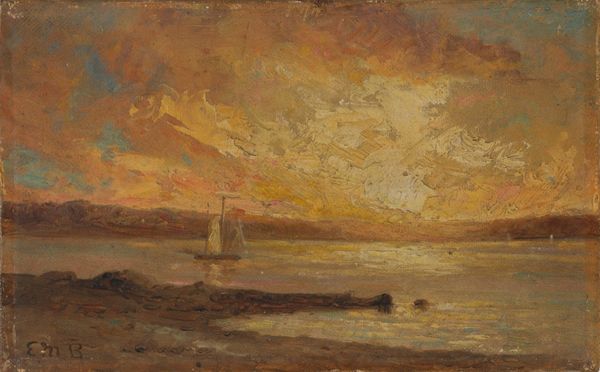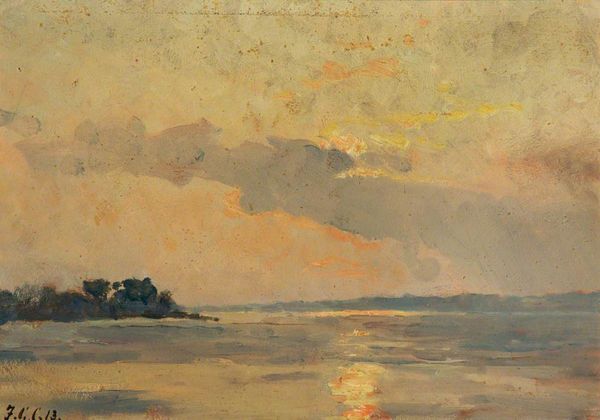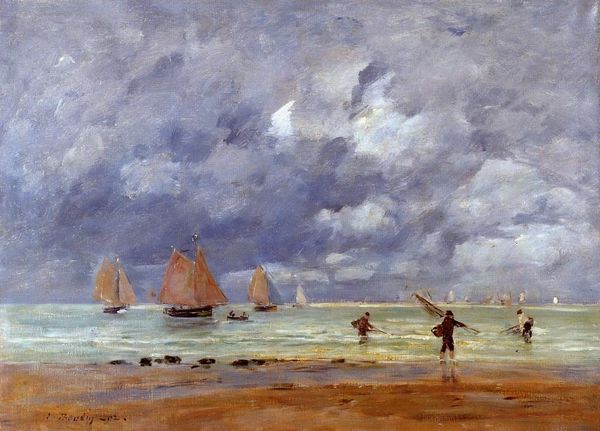
Copyright: Public domain
Curator: Before us hangs Eugène Boudin's "Le Havre. Stormy Skies over the Estuary," painted in 1894. Boudin, often considered a precursor to Impressionism, masterfully captures the atmospheric conditions of the northern French coast. Editor: Immediately, the brooding sky strikes me. There's a palpable sense of unease, almost a premonition of change hovering within those turbulent clouds. It speaks to the fragility of existence. Curator: Precisely. Notice how Boudin uses swift, almost ephemeral brushstrokes to depict the sky. The paint application creates a sense of movement, suggesting the rapid passage of the storm clouds. Semiotically, we can read this as an emphasis on the transient nature of experience, a central tenet of Impressionist philosophy. Editor: I’m curious about who is experiencing this seascape. The late 19th century was a period of intense maritime labor struggles and also bourgeois leisure along the French coast. Boudin frequently represented both social worlds. Are these stormy skies impartial, or a subtle nod to precarious coastal lives? Curator: An interesting point. One could certainly analyze it through the lens of labor. However, focusing on the formal aspects, the composition is divided into three distinct horizontal bands: the sandy beach, the choppy water, and the dominating sky. This tripartite structure gives the painting a balanced, albeit dramatic, feel. Editor: The scale of the sky compared to the strip of beach seems deliberate. To me, it highlights how nature is far more immense than the society it beholds, demanding that we reconsider hierarchies of power between individuals, systems, and ecological forces. Curator: Perhaps, and consider how the limited palette enhances this dramatic effect. The muted tones of gray, brown, and blue, punctuated by occasional hints of purple, contribute to the somber mood. Boudin's restraint reinforces the scene's austerity and raw beauty. Editor: This austerity certainly makes it speak to today's precarious times and shifting political and ecological landscapes. In 1894, industrial development had already caused substantial environmental change. Now, more than ever, skies like this speak to both environmental justice and precarity for marginalized coastal communities. Curator: An evocative interpretation. The beauty of formalist analysis allows us to perceive how visual elements create emotional depth, separate from imposed meaning. The sheer intensity and the dynamic application of color creates meaning, regardless of context. Editor: And that is what is wonderful about this exchange. Juxtaposing these critical analyses allows the work to become more alive.
Comments
No comments
Be the first to comment and join the conversation on the ultimate creative platform.
